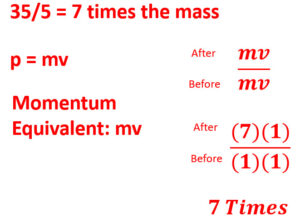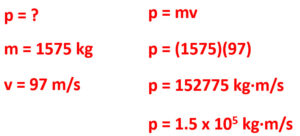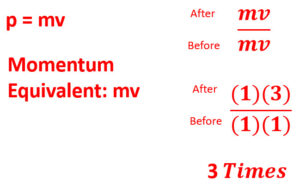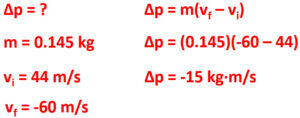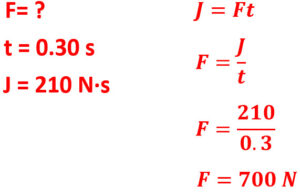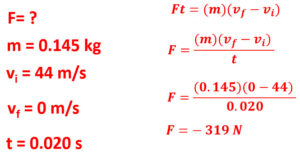Momentum and Impulse
Momentum is an objects moving inertia when a mass is in motion. Learn more about momentum and impulse see examples and take a practice quiz.
Find the handout for this lesson at teachers pay teachers here
Learning Targets
- I understand momentum and can use the momentum equation so solve for variables
- I understand impulse and can use the impulse equation to solve for variables
- I understand how increasing time decreases the force of impulse
- I understand how an impulse changes momentum
- I can solve for variables using the impulse equals change of momentum equation
Momentum (p) is an objects moving inertia
- To have momentum you must have a mass and be moving
Momentum equation:
p = mv
Momentum unit:
kg∙m/s
Momentum and Impulse Variables
| Name | Variable | MKS Unit | Unit Abbreviation |
| Momentum | p | kilograms times meters per second | kg∙m/s |
| Mass | m | kilogram | kg |
| Velocity | v | meters per second | m/s |
| Impulse | J | Newtons times seconds | N∙s |
| Time | t | seconds | s |
Momentum is Directly Related to Mass
The larger the mass moving the same speed the larger the momentum.
The 5 kg car going 10 m/s:
- p=mv
- p=(5)(10) = 50 kg∙m/s of momentum
The 35 kg car going 10 m/s:
- p=mv
- p=(35)(10) = 350 kg∙m/s of momentum
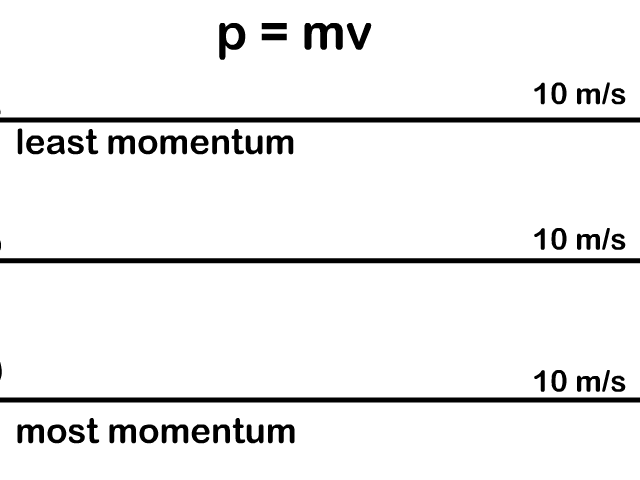
Q1: What happens to momentum if the mass of a moving object is increased?
Q2: How much more momentum does a 35 kg object have than a 5 kg object?
Review this page if you don't remember how to do these ratio like problems
Momentum is Directly Related to Velocity
- You have more momentum when the same mass has a higher velocity
- If you have no velocity you have no momentum
The 15 kg car going 0 m/s:
- p=mv
- p=(15)(0) = 0 kg∙m/s of momentum
The 15 kg car going 10 m/s:
- p=mv
- p=(15)(10) = 150 kg∙m/s of momentum
The 15 kg car going 20 m/s:
- p=mv
- p=(15)(20) = 300 kg∙m/s of momentum
The same car going double the speed has double the momentum.
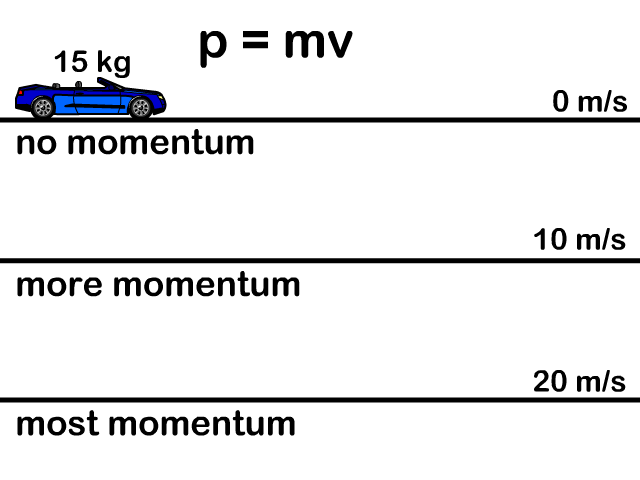
Q3: How much momentum does a 1575 kg Lamborghini Aventador at its top speed of 97 m/s?
Q4: How much more momentum does an object have when its velocity is tripled?
Change in Momentum and Impulse
- An object changes its momentum when its velocity changes.
Change in Momentum Equations:
Δp = mΔv
Δp = m(vf – vi)
Note: You must account for direction when a problem has a changing direction. If backwards, you will make velocity negative.
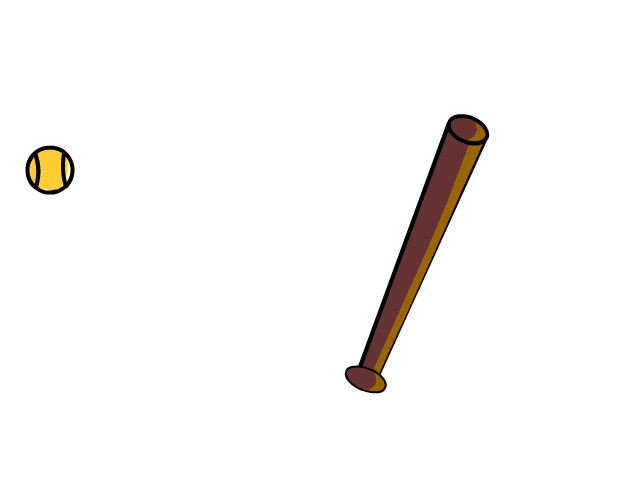
Q5: What is the change in momentum of a 0.145 kg baseball traveling 44 m/s forward when hit back at 60 m/s?
Impulse (J)
An impulse (J) is a force applied for a time, which results in a change of momentum.
Impulse Equation: J = Ft
Impulse unit: N∙s
A bat creates an impulse when force is applied for a time period changing a baseballs momentum.
Q6: How much force is applied during a 0.30 second 210 N∙s impulse?
Q7: How much different is the impulse when padding increases the time of impulse by three times?
Impulse (J) is equal to an objects change in momentum (Δp)
Impulse: J = Ft
Change of Momentum: Δp = mΔv
Impulse Equals Change of Momentum: J = Δp
Other Versions of the Equation:
J = mΔv
Ft = mΔv
Ft=m(vf-vi)
The unit for impulse equals change in momentum
- A (N∙s) is the same as a (kg∙m/s)
Q8: How much force is required to stop a 0.145 kg baseball traveling at 44 m/s in 0.020 seconds?
Cushioning Increases Time Decreasing Force
A car designed to crush safely on impact keeps passengers safe. Therefore, you need to replace the car but the passengers stay safe. Both cars in this animation start at 15 m/s and end at zero. Both cars with the same mass and same change of velocity have the same change in momentum.
Since impulse equals the change in momentum both cars also have the same impulse.
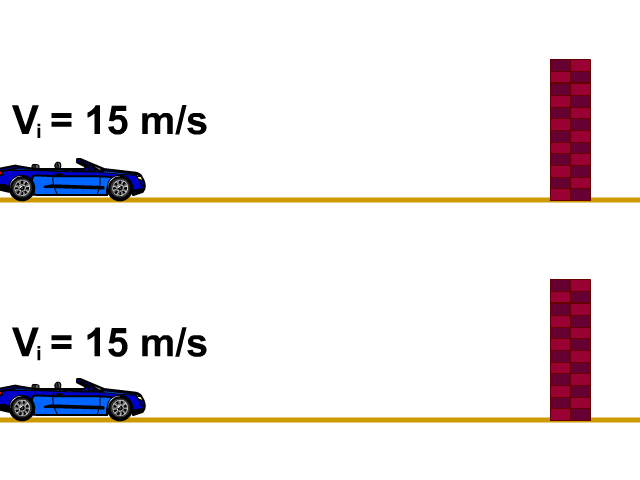
Q9: How can padding or the crushing of a car on impact keep a person safe?
Crushing Acts Like A Pillow
Impulse is composed of force and time. A car can't change the impulse or change in momentum but crushing is like padding. Padding increases the time a force is applied and therefore decreases the amount of force. This decrease of force can lessens the impact on passengers.
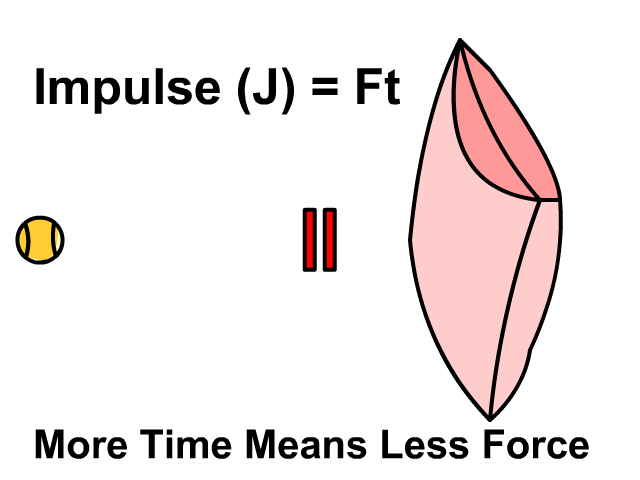
Momentum and Impulse Problem Set
Click check answer to see a quick answer. At the end of the video at the beginning of this page I go through the solutions.
1. How many times different is the momentum of a truck that has double the mass and double the velocity of a car?
2. How much momentum does a 2.0 kg toy car going 3.25 m/s have?
3. What is the mass of a bicycle that has 108 kg∙m/s of momentum at a speed of 12 m/s?
4. How much force is applied in 0.5 s if the impulse is 18.2 N∙s?
5. How much force is required to stop a 1200 kg car traveling at 8.5 m/s in 3.0 seconds?
6. How many times different force if the time of the impulse decreases to half the original?
7. What is the final velocity of a 0.152 kg t-ball that has a force of 10 N applied for 0.18 seconds starting from rest?
8. What is the final velocity of a 0.145 kg baseball that has a force of 25 N applied backwards for 0.15 seconds starting from 10 m/s?
Links
- On to Collisions and Conservation of Momentum
- Back to the Main Impulse and Momentum and Conservation of Momentum Page
- Back to the Stickman Physics Home Page
- For video tutorials and other physics resources check out HoldensClass.com
- Find many of your animation resources in one place at the StickMan Physics Gallery
- Equation Sheet

